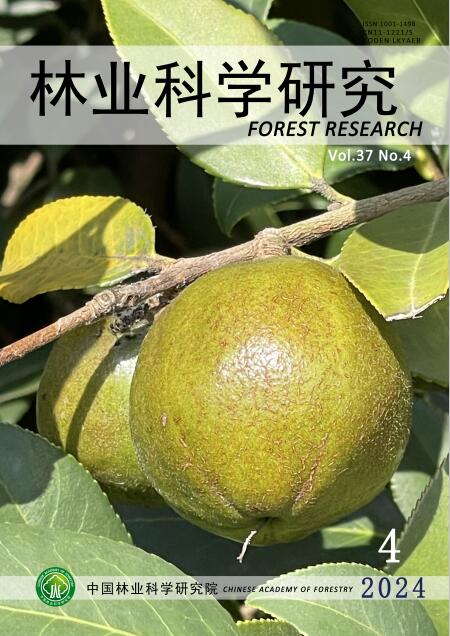机械化间伐、定火和针叶年龄对杰弗里松矿质营养的影响:叶片和土壤元素浓度
Q4 Agricultural and Biological Sciences
引用次数: 4
摘要
研究了在不同生长季节对杰弗里松(Pinus jeffreyi Grev)矿质营养的影响。& half .)。特别检测了包括宏量营养素和微量营养素以及Al在内的叶面和土壤元素浓度。在最初的时候,薄林分亚单位的叶面N较高,然后在切长或整树亚单位的燃烧部分过渡到相对较高的浓度,而在六个采样周期的最后两个周期中,燃烧切长处理组合的叶面S较高。叶片Mn通常在被烧整树组合中较高,而B和Al通常在被烧林分部分中较高,但在间伐处理中特异性较低。生长季中期,幼针叶中N、P、K、S、Fe、Cu含量较高,老针叶中Ca、Mn、Al含量较高。研究中期,矿质土壤Ca在未薄化的亚基中较高,而Mg、Fe、Mn、Zn和Cu在未燃烧的林分部分中较高。本文章由计算机程序翻译,如有差异,请以英文原文为准。
Mechanized Thinning, Prescribed Fire, and Needle Age Influences on the Mineral Nutrition of Jeffrey Pine: Elemental Concentrations in Foliage and Soil
Forest thinnings using cut-to-length and whole-tree harvesting approaches followed by prescription underburning were assessed for their influences over multiple growing seasons on the mineral nutrition of Jeffrey pine (Pinus jeffreyi Grev. & Balf.) on a Sierran site. Specifically examined were foliar and soil elemental concentrations encompassing macronutrients and micronutrients plus Al. Foliar N was higher in thinned stand subunits initially before transitioning to a relatively elevated concentration in the burned portion of either the cut-to-length or wholetree subunits, while higher foliar S in the burned cut-to-length treatment combination was evident in the last two of the six sampling periods. Foliar Mn was usually higher in the burned whole-tree combination while B and Al were often higher in burned stand portions but with less specificity regarding thinning treatment. At mid growing season, N, P, K, S, Fe, and Cu were higher in young needles while Ca, Mn, and Al were so in older ones. Near mid study, mineral soil Ca was higher in the unthinned subunit while Mg, Fe, Mn, Zn, and Cu were higher in unburned stand portions.
求助全文
通过发布文献求助,成功后即可免费获取论文全文。
去求助
来源期刊

林业科学研究
Environmental Science-Ecology
CiteScore
0.90
自引率
0.00%
发文量
4834
期刊介绍:
Forestry Research is a comprehensive academic journal of forestry science organized by the Chinese Academy of Forestry. The main task is to reflect the latest research results, academic papers and research reports, scientific and technological developments and information on forestry science mainly organized by the Chinese Academy of Forestry, to promote academic exchanges at home and abroad, to carry out academic discussions, to flourish forestry science, and to better serve China's forestry construction.
The main contents are: forest seeds, seedling afforestation, forest plants, forest genetic breeding, tree physiology and biochemistry, forest insects, resource insects, forest pathology, forest microorganisms, forest birds and animals, forest soil, forest ecology, forest management, forest manager, forestry remote sensing, forestry biotechnology and other new technologies, new methods, and to increase the development strategy of forestry, the trend of development of disciplines, technology policies and strategies, etc., and to increase the forestry development strategy, the trend of development of disciplines, technology policies and strategies. It is suitable for scientists and technicians of forestry and related disciplines, teachers and students of colleges and universities, leaders and managers, and grassroots forestry workers.
 求助内容:
求助内容: 应助结果提醒方式:
应助结果提醒方式:


